Many players don’t go under the spotlight no matter how hard they work or how well they perform. Some call them underrated, others just mediocre, but in fact, they might have been very valuable for their clubs not only physically, technically but also mentally.
The opinions on Olivier Giroud have always been controversial, but looking at his record of 550 professional games, 221 goals and 81 assists, it is difficult to refuse his career so far has been quite successful.
Starting from France’s Ligue 2 and Ligue 1, the Frenchman moved on to leave his mark at Arsenal and continue his Premier League journey with Chelsea, scoring 90 PL goals and assisting 32 more. He just won the Champions League with the Blues, before making a step towards Serie A, signing a 2-year contract with AC Milan.
At 34 years old with all the achievements behind, Giroud still faces disrespect and admits that he is still being underrated.
“There is nobody who will be praised by everybody. You know it is part football, part of the game.” Giroud told Stadium Astro. “Maybe sometimes I am underrated but the most important thing is the numbers. For a striker that is what matters. As long as I am efficient for my club and Les Bleus and making my family proud, the rest I concede.”
Now, that he’s joined Milan, the comparisons with Zlatan Ibrahimović have started and the Frenchman has to prove himself once again.
In this scout report in the form of tactical analysis, we will examine Giroud’s strengths and explain how he could fir Pioli’s tactics and increase the team’s explosiveness in front of the goal.
Giroud vs Ibrahimović data comparison
Ibrahimović has been very efficient with Rossoneri’s shirt so far and despite his injury last season, Pioli has built his team around him as their main goalscorer. While it is expected that Giroud will be a supporting system to the younger players and might not be a regular starter, it is worth comparing both players’ data and seeing if they are interchangeable. The fact that Milan are participating in the Champions League this season makes the Frenchman’s arrival even more necessary, bringing more depth and experience in attack.
The similarities between both strikers are clear – they are both target man and whenever they play, they are used as the main source of chances in front of the goal. With great physicality, hold up play and aerial presence they do have some similar characteristics. What’s not shown by the data is the differences in their style of play. While the Swede is much more versatile in his movement outside the box, supporting the team’s ball progression with his hold up play, Giroud is more limited to the box area, where he provides the most threat with his runs and positioning, although he does contribute with link-up-play too.
This is also confirmed by their 2020/21 “Passing” data below.
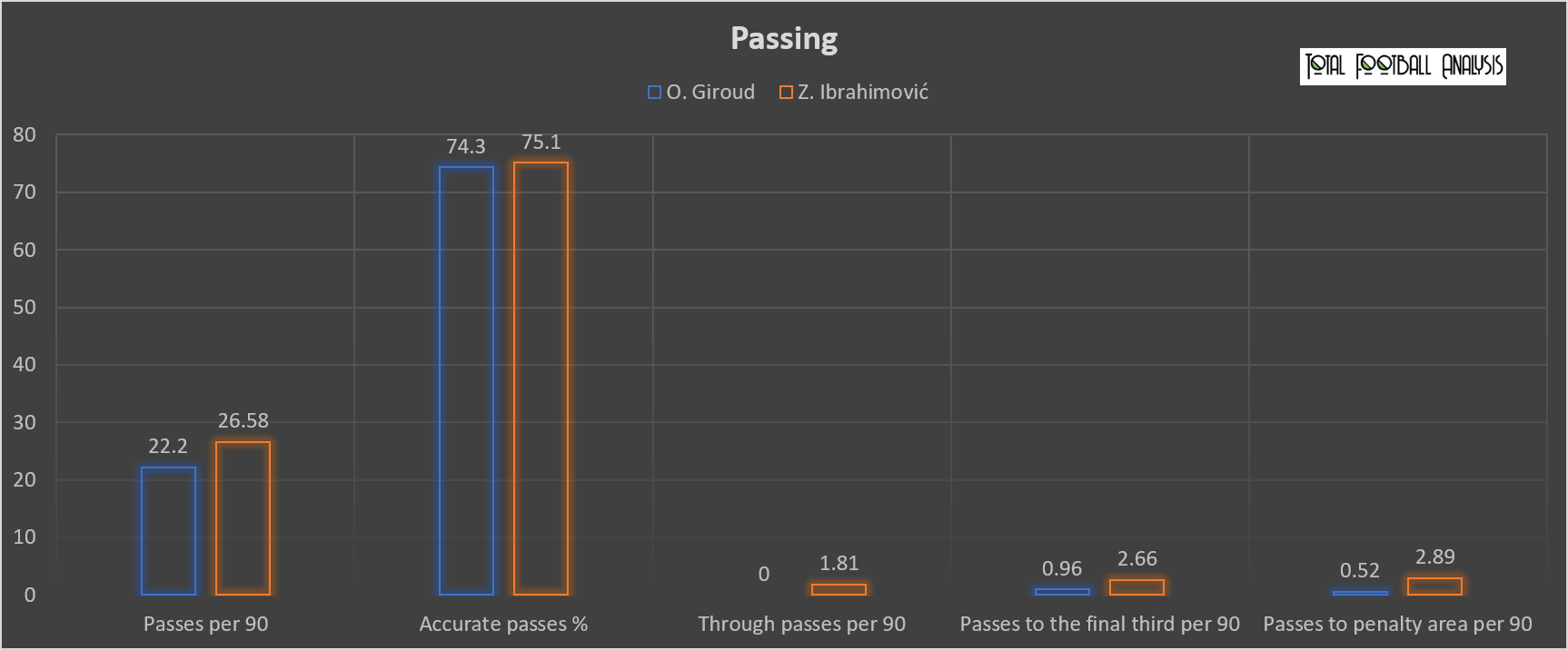
While their overall passing accuracy is similar, Ibrahimović’s support to his teammates and his impact on the final third actions is illustrated in his Through passes, Passes to the final third and Passes to the penalty area. As shown, Giroud’s average contribution in that matter is closer to zero, while his new teammate provides more threatening passes on average.
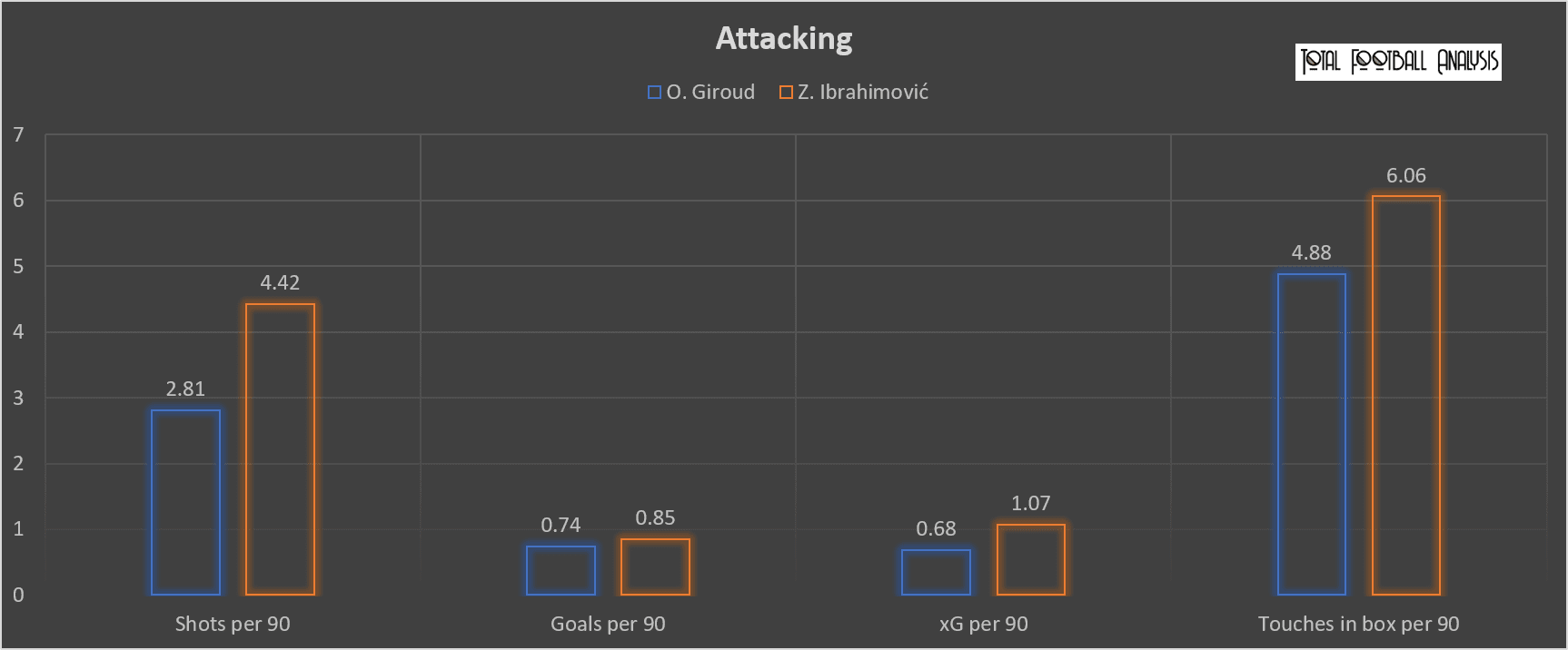
Looking at their attacking data, it comes as no surprise that Ibrahimović was more productive in front of the goal with 4.42 shots per 90, compared to Giroud’s 2.81. It turns out though that the 34-year-old has been more efficient with 0.74 goals on average, which is rather close to his xG per 90 of 0.85. The expectations upon Ibrahimović have been higher (xG 1.07), while he has averages 0.68 goals.
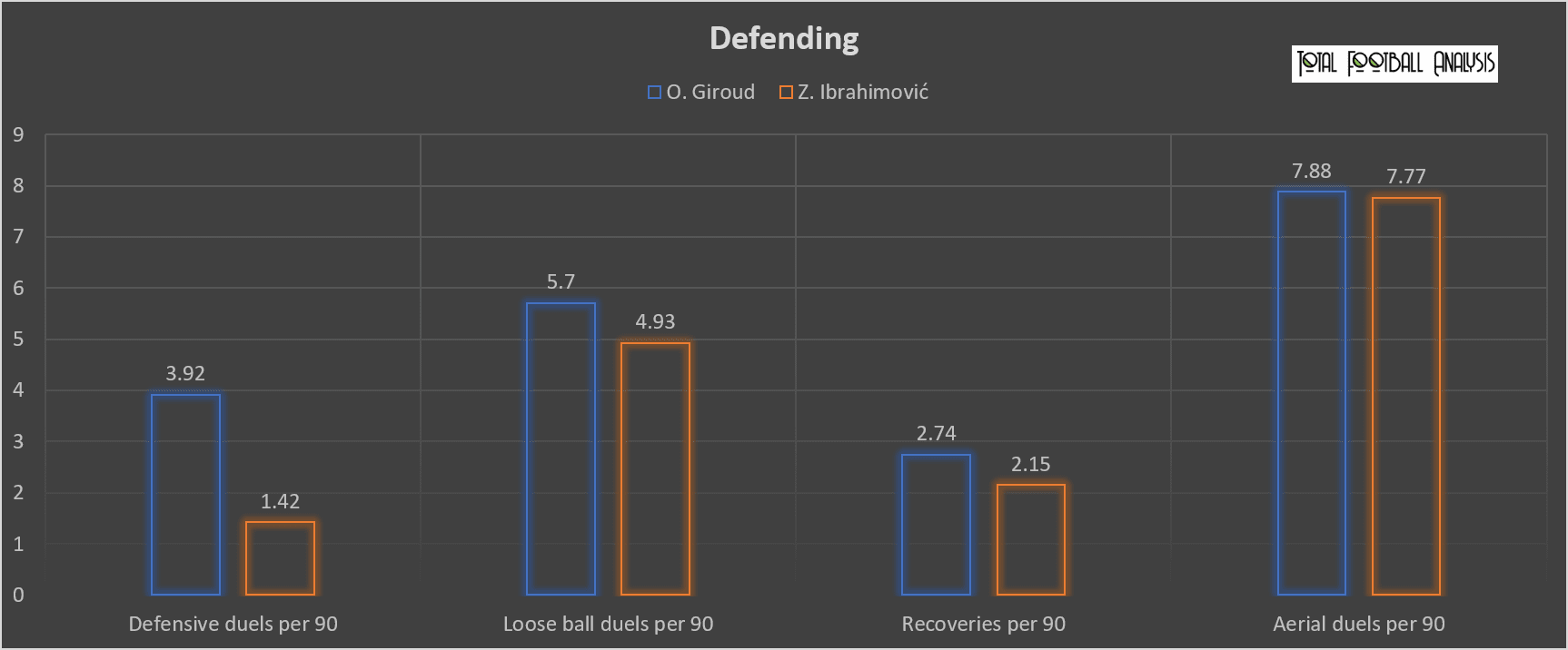
By comparing their defending data, we can see that Giroud has had a better defensive contribution than his new teammate. He was involved in more defensive duels and has been more active in loose ball duels, which shows his willingness to win the ball and gain possession. They both occasionally recover the ball, but more importantly, they perform similarly in the air. This is very important in order to fulfil their role successfully and convert the chances into goals. With the height of 1.92m (Giroud) and 1.95m (Ibrahimović), their aerial presence is one of their best assets both for retaining the team’s possession and for headed attempts on the goal.
Testing the 4-4-2 formation
While Stefano Pioli relied on the 4-2-3-1 formation in 2020/21, he tries out different set-ups in their pre-season now. It looks like the manager is testing out the 4-4-2 scheme in the absence of a distinguished attacking midfielder after Hakan Çalhanoğlu’s departure to their city rivals Inter.
Using the 4-4-2 could not only compensate for the lack of a creative player behind the frontline but would also allow Pioli to do different combinations upfront and not rely on only one striker as a target man. This will also allow the team to commit more bodies in attack the overload the opposition half.
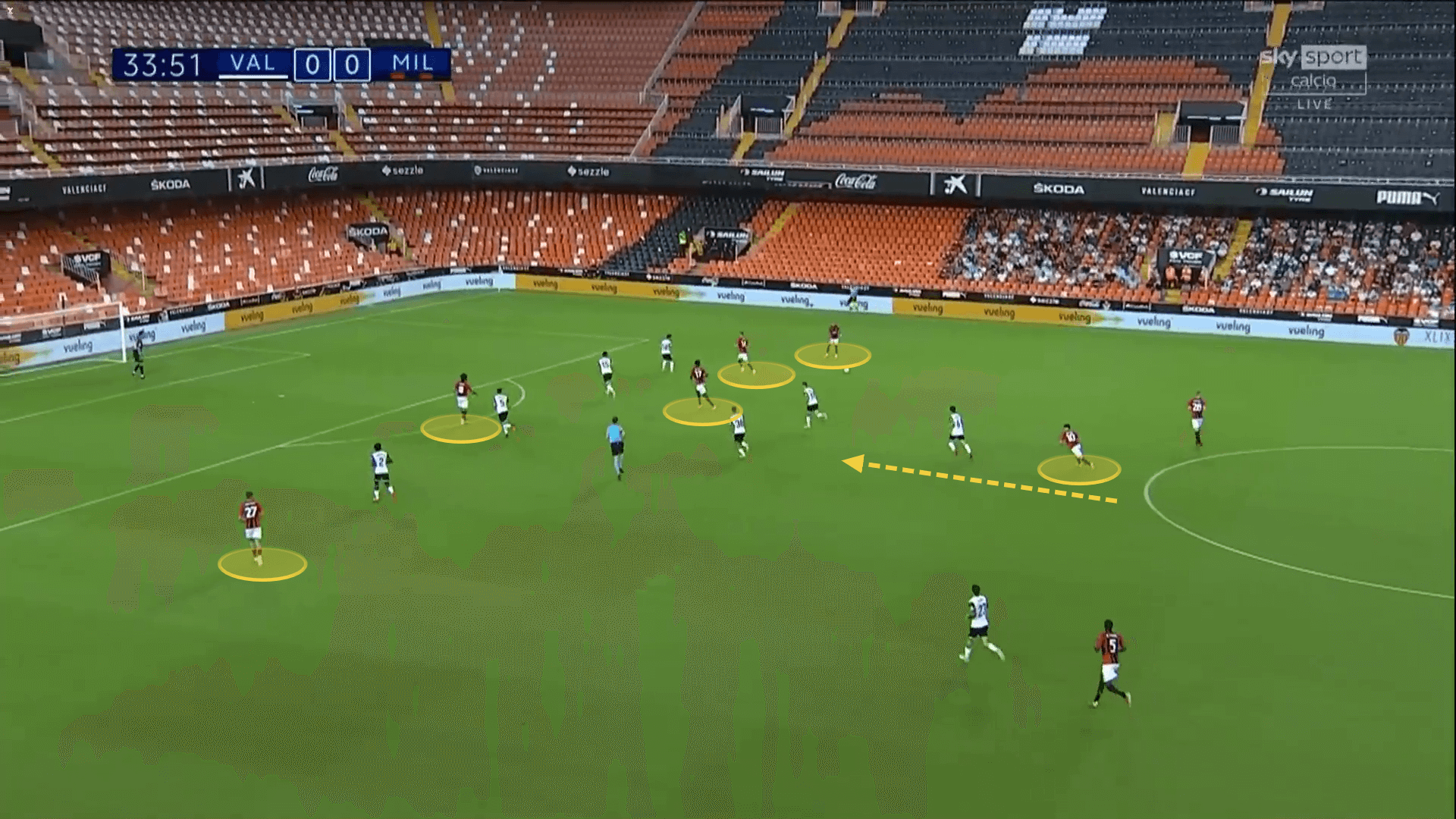
Ultimately, this could result in him using both Giroud and Ibrahimović next to each other. This will bring the needed experience and explosiveness in front of the goal, although having two leading figures might not work out. This will put more pressure on the wingers, though, who need to be strong technically to deliver the ball successfully to the strikers and be the creative force in attack. Respectively, this means that Milan need to consider signing another winger.
The more likely scenario is using one of the two experienced forwards next to Rafael Leão, Ante Rebić or even Brahim Díaz. That way, the team would still have a strong presence centrally, while the second striker will move out wide and support the ball progression and complement his teammate’s movement.
How can Pioli successfully use Giroud’s assets?
The 34-year-old could be beneficial for the team in many ways. His spatial awareness is one of his most valuable assets which will provide an additional threat in front of the goal. The Frenchman’s positional flair is extremely important in attack as he exploits spaces perfectly with his movement and often breaks defences in efforts to create goalscoring opportunities. While he is not a creative passer, his spatial awareness allows him to contribute to the link-up-play very well and gives him the chance to move to key areas off the ball, providing passing options in front of the goal.
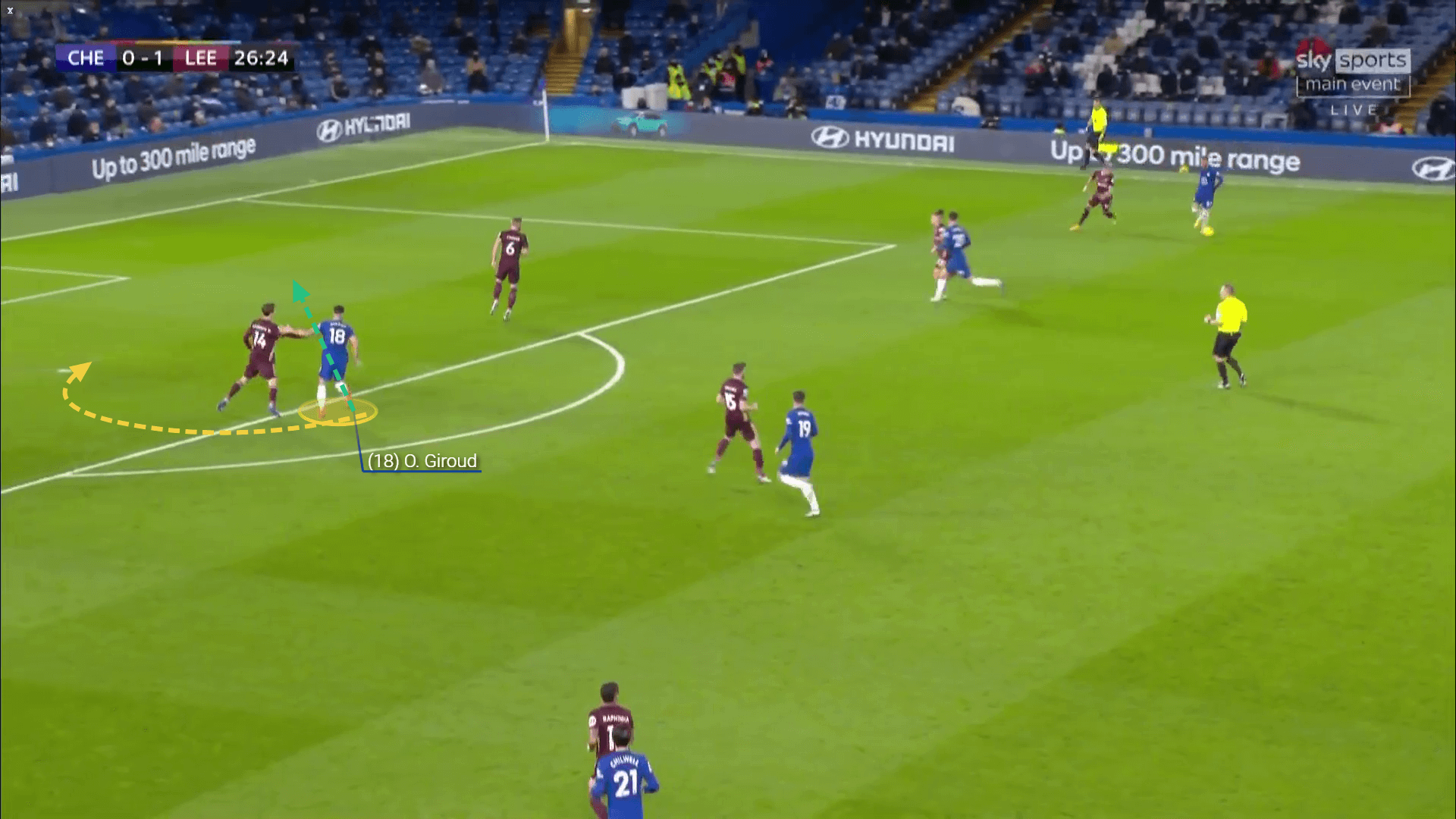
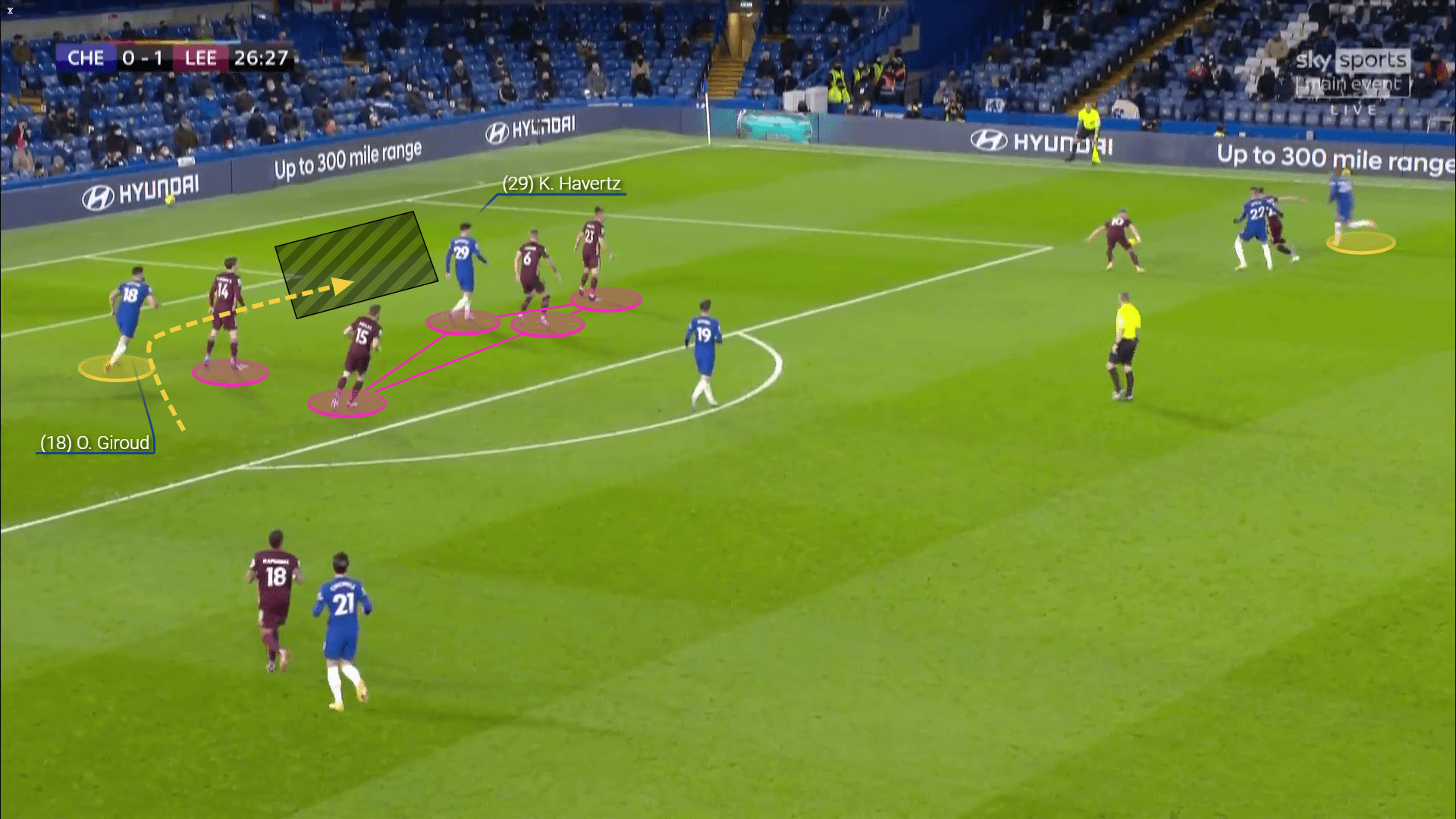
While he wouldn’t drop down to the central line as often as Ibra, his positioning at the edge of the penalty area is key for his explosiveness as it allows him to judge the situation well and exploit spaces with his runs to the box. Combined with strong decision-making and great finishing, Giroud is a player who can step up and make a difference in the final third.
His aerial abilities add even more value to his performance. He can receive long passes behind the defence and hold on to the ball successfully, which could help Milan in breaking through low blocks and well-structured defences.
Giroud’s aerial presence would fit perfectly to Milan’s set-piece strategies. Pioli’s side have been one of the most efficient sides in terms of attacking set-pieces last season, scoring 15 goals from these situations. The striker would not only fit well but would bring more explosiveness in front of the goal and increase their efficiency from set-plays. In fact, he already scored a header from a set-piece in his Milan debut against Nice.

While it is not among his most distinguished qualities, Giroud is often in a great position to provide through balls. He does occasionally use his positioning to contribute to one-touch pass combinations and support his teammates’ movement.
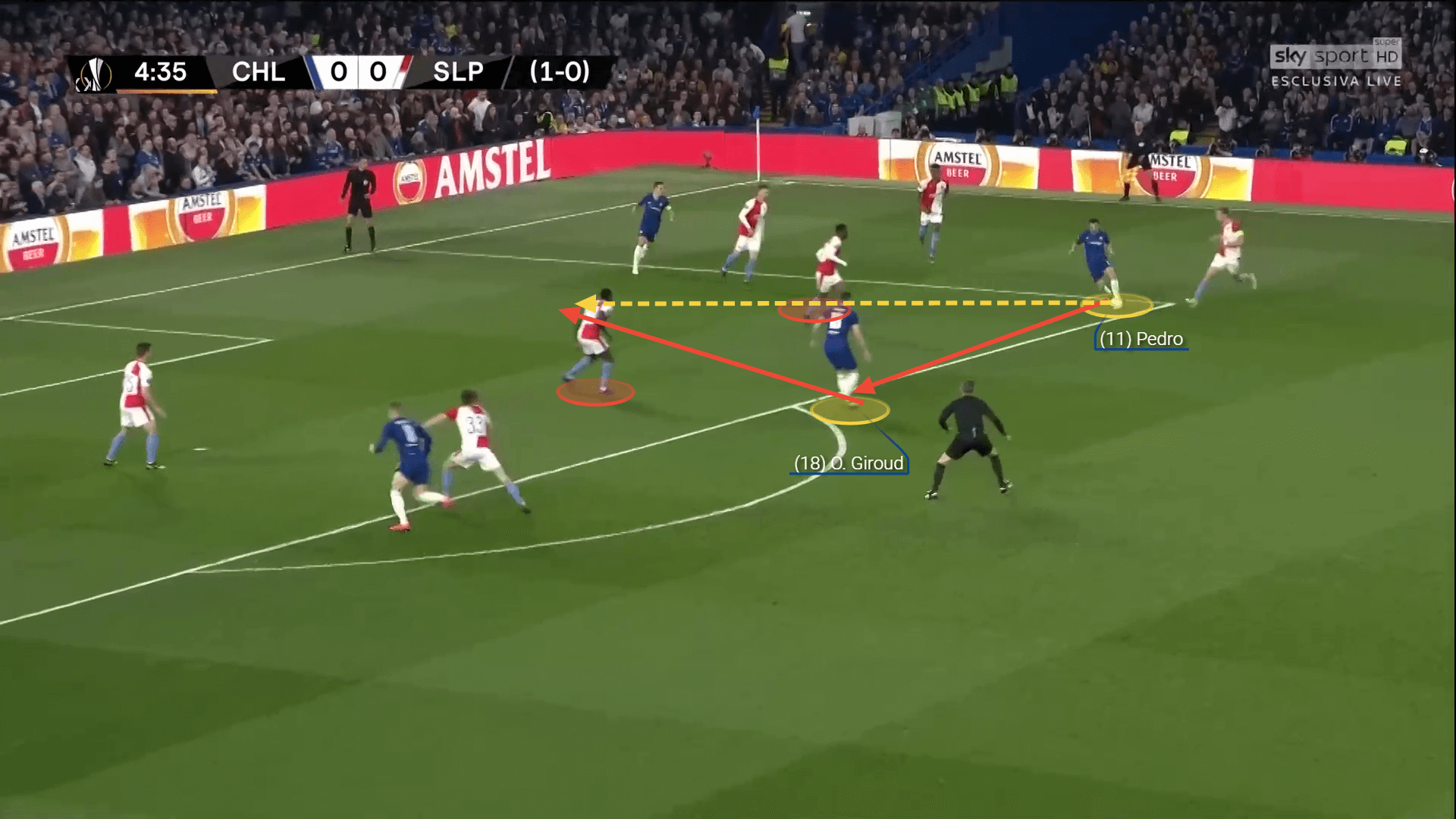
Conclusion
As our analysis shows, Giroud is a great addition to Pioli’s Milan. He could boost the team’s attacking confidence by bringing experience and explosiveness and increasing their efficiency in front of the goal. He would add the needed depth in attack and could be key in Milan’s Champions League journey next season.






Comments